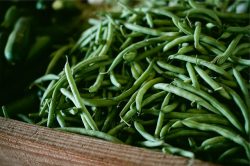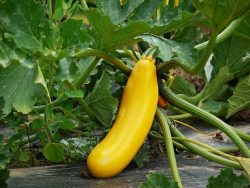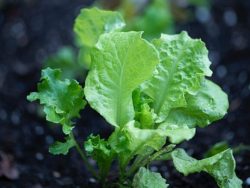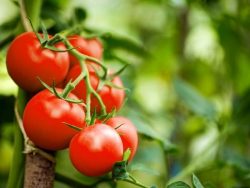Would you like to grow a vegetables garden at home, but you don’t know where to start? In this article, discover the 5 easy-to-grow vegetables as well as several tips to know about each of them to obtain an abundant harvest in the vegetable garden this season.
Beans
It is not for nothing that we learn to cultivate them from primary school. There are two varieties of beans: the climbing (or stalking) bean and the dwarf bean.
The climbing (or rowing) bean
The climbing bean grows to about 15 feet – 4.5 m in height. It therefore needs a trellis or a teepee as a tutor to facilitate its growth. Its production begins in mid-July and lasts 6 to 8 weeks. They are known to produce 2 to 3 times more than bush beans.
Interesting fact :
The more you harvest climbing beans, the more they produce!
Dwarf bean
The dwarf bean, on the other hand, is rather compact (24 inches – 60 cm in height) and does not require any stakes. Its production occurs earlier than climbing beans, around mid-June, and generally ends after 2 to 3 weeks. To obtain a continuous harvest, you can re-sow up to four times, approximately two weeks apart.
Beans thrive with at least 8 hours of sunlight per day. You can sow them directly in the garden, but be patient because the bean requires heat to germinate. Once the lilacs begin to bud, it is a sign that the soil temperature is around 18°C. Now is the perfect time to sow your beans. You can always start your seedlings indoors, 2 to 3 weeks before, but you will have just as good results by sowing them directly in the vegetables garden at the appropriate time.
Harvest the beans when they are still young and tender and you can barely see the kernels (about 12 cm). If you wait too long, the pods will become fibrous, and tough and contain large, unappetizing grains.
Zucchini
Also called “zucchini”, zucchini is considered the most productive of vegetables since one plant is enough to feed an average family of 4 people. This easy vegetable is sown directly in the garden when nights regularly reach over 15°C (usually at the beginning of June depending on the region). As this vegetable is rather climbing, do not hesitate to add stakes to make your plant climb higher and thus prevent the fruits from rotting by remaining in contact with the ground. As zucchini is a fairly greedy vegetable, it will require an addition of compost at the start of the season as well as a small dose of natural fertilizer for vegetable gardens every 4 weeks to promote an abundant harvest.
Harvest the zucchini every 2 to 3 days when they are still young and tender, about 15 to 20 cm long. This will stimulate the production of other fruits. On the contrary, if you delay harvesting them, as beginners often do, the zucchini will then become giant and they are unfortunately no longer very good for consumption. You also risk slowing down or even stopping production. The harvest of a plant can last until September if the temperature is favorable.
Leaf lettuce
Lettuce is certainly the most popular vegetable to grow in the garden. As this vegetable loves cool temperatures, it is best to sow it in the shade directly in the ground around the beginning of May. Lettuce is a fast-growing vegetable, so there’s no need to sow it indoors. Even once cut, it grows back in a few days. This is why it can be sown several times during the season to allow you to spread out your harvest over several weeks.
How to Harvest Leaf Lettuce – 2 Techniques?
- Remove young leaves with your fingers
Once your lettuce plant reaches a height of 3 to 6 inches, remove the large leaves on the outside of the plant and leave the smaller central leaves to allow them to continue growing. This technique allows you to harvest as you consume. Note that this method can also be used on spinach.
- Completely cut off the head of the lettuce plant
Using a sharp knife, simply cut the head of the lettuce about 4 centimeters from the ground to keep the crown intact. Thus, it will be able, in certain cases, to produce a second time and allow you to harvest again towards the end of the summer. If you recommend this technique, you may need to keep your lettuce in the refrigerator for a few days before eating it. To do this, wrap it in a cloth or put it in a perforated plastic bag.
Don’t wait for your lettuce to go to seed
When the heat arrives, your lettuce may tend to go to seed. It then becomes bitter and less interesting for consumption. It is then preferable to pull up the plants and sow them again.
Little tip: when you cut your lettuce and notice a milky sap flowing from the leaves, it’s a sign that going to seed is approaching!
Tomatoes
First of all, know that there are two types of tomatoes: determinate and indeterminate varieties. The determinate varieties are bushy, compact, and early. Fruit production is massive and they ripen almost all at the same time. The indeterminate varieties are rather climbing. They must be firmly staked because their production is abundant and continuous throughout the season.
Good to know!
Tomatoes require a minimum of 8 hours of full sun per day. Being a very greedy vegetable, you must add natural fertilizer for vegetable gardens every 3 to 4 weeks. This will encourage an abundant harvest throughout the season. Watering must therefore be regular (see daily) and abundant.
Horizontally !?
Did you know that the best way to plant your tomato plants is horizontally? This method promotes a 2 to 3x stronger root system and prevents your tomatoes from being blown away by the wind. Your plants will still absolutely need a stake.
And the foodies in all this!?
Truth be told, tomato plants do not produce suckers since by definition, a sucker is a stem that does not produce fruit. However, if these small secondary stems are allowed to grow, they will eventually produce flowers and therefore fruit.
To find out which varieties to grow in containers or for even more tips and tricks on how to grow tomatoes, see our article
Radish
Radish is a fairly easy vegetable to grow. It tolerates shade and cool temperatures very well. You can therefore sow your seeds in the ground 3 to 4 weeks before the last frost. Repeat sowing every two weeks to promote a consistent harvest throughout the season.
When to harvest them?
Harvest them a little before they reach full size – 4 to 6 weeks after sowing. Don’t wait until your radishes become too large and crack, their taste will then become too strong or even unpleasant. Radishes also need to be watered often to prevent them from becoming fibrous and bitter.












